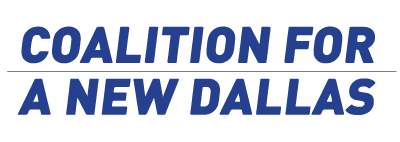fair park
Revitalize Fair Park.
Fair Park should reach out into neighboring communities; should no longer be a seldom used concrete heat island, flanked by fencing and surrounded by blighted neighborhoods.
Fair Park was once our city’s crown jewel, the centerpiece of urban living. Today, it is surrounded by concrete, poverty, and despair. By creating an expansive green park, reconnecting the park with its surrounding neighborhoods, removing the perimeter gates, fencing, and moat of parking lots, and re-opening the streets to and through the park, Dallas could restore its most important park, remake it into a source of year-round activities and enjoyment for the city, and stimulate revitalization of the adjacent neighborhoods.
Plans and studies for redoing Fair Park, if stacked one atop another, could reach to the ceiling. The problem is, these studies have always presented top-down solutions to revitalizing the park. Fair Park will be revitalized only if the neighborhoods have a hand in its re-making
We are encouraged, then, by the City Council’s approval of a new private operator. We support creation of a significant “community park in the park”, employment guarantees for residents of the surrounding zip codes, skills training for students, opening up the Cotton Bowl for more events including football games and other sporting events for area high schools, and bringing year round attractive tenants to the mostly empty buildings. This still allows the company to book other events to keep the park alive when the State Fair of Texas shuts down while not forgetting the residents who call the neighborhood home.
New development arising from the removal of I-345 creates the market demand that is needed to force the issue on Fair Park. This could be a major economic development and job engine for one of the city’s most beleaguered parts of town. By bringing economic activity to the East End of downtown, by putting people on the streets and amenities on the street corners, we both energize an entire section of the city that is now lifeless and nearly deserted and produce millions of dollars of new tax revenues for the city. That energy has a spillover effect. The biggest beneficiary of that spillover effect would be Fair Park. It could once again become our city’s crown jewel, the centerpiece of urban living in Dallas.
Where We Stand.
The city should allow for other possibilities within the levees, beginning with the neighboring acreage between the Sylvan Bridge and the Ron Kirk Pedestrian Bridge. This is where the city should seek to prove the concept of rewilding: with the help of naturalists, botanists, and biologists, this part of the Trinity can preserve the natural blackland prairie right in the city center. We believe invasive species should be removed and replaced with plants that can attract water flow, butterflies, and other forms of wildlife. Residents should be able to engage in the natural environment, to observe the flora and fauna that can thrive with the right conditions. The Army Corps of Engineers has already approved what’s known as the Balanced Vision Plan, which will guide the determination of species that can live within levees while still allowing for effective flood control. If done correctly, this portion of the Trinity can become a destination for ecotourism while offering educational opportunities for our school children. It will be complementary to the Harold Simmons Park; our residents can spend time in nature, then walk over to the other side of the bridge for recreation. Most importantly, what is ultimately done within the Trinity should be leveraged to reach across the levees in order to help the city re-engage with the river.Here is a description of your campaign.

